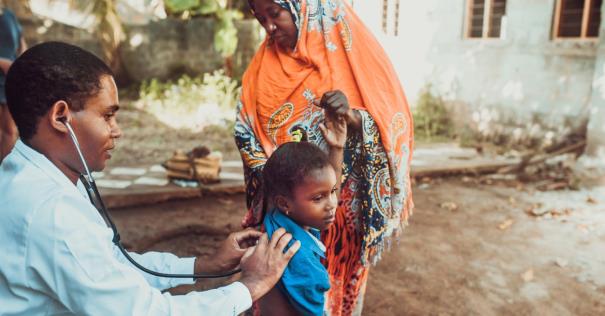Close to 1 billion people in low- and lower-middle income countries are served by healthcare facilities that lack a reliable electricity supply, according to a new report from the World Health Organization (WHO), the World Bank, the International Renewable Energy Agency (IRENA), and Sustainable Energy for All (SEforAll). Access to electricity is critical for quality healthcare provision, from delivering babies to managing emergencies like heart attacks, or offering lifesaving immunisation. Without reliable electricity in all healthcare facilities, Universal Health Coverage cannot be reached, the report notes.
Increasing electrification of healthcare facilities is essential to save lives
The joint report, Energizing health: Accelerating Electricity Access in Health-Care Facilities, presents the latest data on electrification of healthcare facilities in low- and middle-income countries. It also projects investments required to achieve adequate and reliable electrification in healthcare.
Opening the event that launched the report at IRENA 13th Assembly, IRENA Director-General Francesco La Camera said, “Health facilities should be a high priority in electrification plans among both national governments and development partners. IRENA stands ready to work with all partners to transform ambitions to actions.”
Representing the World Bank, Demetrios Papathanasiou, Global Director – Energy and Extractives Global Practice said that he looked forward to seeing the investments go into healthcare facilities to achieve universal healthcare. Following his remarks, Damilola Ogunbiyi, SEforALL’s Chief Executive Officer said, “I believe this report is the right first step towards achieving some of the sustainable development goals.”
Electricity is needed to power the most basic devices – from lights and communications equipment to refrigeration, or devices that measure vital signs like heartbeat and blood pressure – and is critical for both routine and emergency procedures. When health-care facilities have access to reliable sources of energy, critical medical equipment can be powered and sterilised, clinics can preserve lifesaving vaccines, and health workers can carry out essential surgeries or deliver babies as planned.
And yet, in South Asia and sub-Saharan African countries, more than 1 in 10 health facilities lack any electricity access whatsoever, the report finds, while power is unreliable for a full half of facilities in sub-Saharan Africa. Although there has been progress in recent years on electrification of healthcare facilities, approximately 1 billion people worldwide are served by healthcare facilities without a reliable electricity supply or no electricity at all. To put this in perspective, this is close to the entire populations of the United States, Indonesia, Pakistan and Germany combined.
Disparities in electricity access within countries are also stark. Primary healthcare centres and rural health facilities are considerably less likely to have electricity access than hospitals and facilities in urban areas. Understanding such disparities is key to identifying where actions are most urgently needed, and to prioritise the allocation of resources where they will save lives.
Health is a human right and a public good
Electricity access is a major enabler of Universal Health Coverage, the report states, and so electrification of healthcare facilities must be considered an utmost development priority requiring greater support and investments from governments, development partners and financing and development organisations.
According to a World Bank needs analysis included in the report, almost two-thirds (64%) of healthcare facilities in low and middle-income countries require some form of urgent intervention – for instance, either a new electricity connection or a backup power system – and some USD 4.9 billion is urgently needed to bring them to a minimal standard of electrification.
No need to ‘wait for the grid’
Decentralised sustainable energy solutions, for example based on solar photovoltaics systems, are not only cost-effective and clean, but also rapidly deployable on site, without the need to wait for the arrival of the central grid. Solutions are readily available, and the impact for public health would be huge.
In her presentation during the launch event, Dr Maria Neira, Assistant Director-General a.i, for Healthier Populations at WHO, said, “No excuses for the solution, no need to wait for the grid. IRENA has pointed out the role of decentralised renewable energy to increase electricity access. It’s cheap and more resilient to climate change. This is a major development priority as it saves lives.”
Additionally, healthcare systems and facilities are increasingly affected by the accelerating impacts of climate change. Building climate-resilient healthcare systems means building facilities and services that can meet the challenges of a changing climate, such as extreme weather events, while improving environmental sustainability.
The report can be accessed here.


